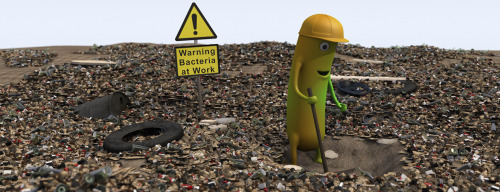当前位置:
X-MOL 学术
›
Sci. Total Environ.
›
论文详情
Our official English website, www.x-mol.net, welcomes your
feedback! (Note: you will need to create a separate account there.)
Bioleaching for resource recovery from low-grade wastes like fly and bottom ashes from municipal incinerators: A SWOT analysis.
Science of the Total Environment ( IF 8.2 ) Pub Date : 2020-01-25 , DOI: 10.1016/j.scitotenv.2020.136945 Helena I Gomes 1 , Valerio Funari 2 , Rebecca Ferrari 1
Science of the Total Environment ( IF 8.2 ) Pub Date : 2020-01-25 , DOI: 10.1016/j.scitotenv.2020.136945 Helena I Gomes 1 , Valerio Funari 2 , Rebecca Ferrari 1
Affiliation

|
Bioleaching (or microbial leaching) is a biohydrometallurgical technology that can be applied for metal recovery from anthropogenic waste streams. In particular, fly ashes and bottom ashes of municipal solid waste incineration (MSWI) can be used as a target material for biomining. Globally, approximately 46 million tonnes of MSWI ashes are produced annually. Currently landfilled or used as aggregate, these contain large amounts of marketable metals, equivalent to low-grade ores. There is opportunity to recover critical materials as the circular economy demands, using mesophile, moderately thermophile, and extremophile microorganisms for bioleaching. A Strengths, Weaknesses, Opportunities and Threats (SWOT) analysis was developed to assess the potential of this biotechnology to recover critical metals from MSWI wastes. Bioleaching has potential as a sustainable technology for resource recovery and enhanced waste management. However, stakeholders can only reap the full benefits of bioleaching by addressing both the technical engineering challenges and regulatory requirements needed to realise and integrated approach to resource use.
中文翻译:

利用生物浸出技术从市政焚化炉的粉煤灰和底灰中回收低品位废物:SWOT分析。
生物浸出(或微生物浸出)是一种生物湿法冶金技术,可用于从人为废物流中回收金属。特别是,城市固体废物焚化(MSWI)的粉煤灰和底灰可以用作生物采矿的目标材料。全球每年生产约4600万吨MSWI骨灰。目前,这些金属被填埋或用作骨料,其中包含大量可销售的金属,相当于低品位矿石。有机会按照循环经济的要求,使用嗜温菌,适度嗜热菌和嗜极端微生物进行生物浸出,以回收关键物质。进行了优势,劣势,机会和威胁(SWOT)分析,以评估该生物技术从MSWI废物中回收关键金属的潜力。生物浸提作为资源回收和增强废物管理的可持续技术具有潜力。但是,利益相关者只能通过解决技术工程挑战和实现资源利用的综合方法所需的法规要求,才能充分利用生物淋洗的全部好处。
更新日期:2020-01-26
中文翻译:

利用生物浸出技术从市政焚化炉的粉煤灰和底灰中回收低品位废物:SWOT分析。
生物浸出(或微生物浸出)是一种生物湿法冶金技术,可用于从人为废物流中回收金属。特别是,城市固体废物焚化(MSWI)的粉煤灰和底灰可以用作生物采矿的目标材料。全球每年生产约4600万吨MSWI骨灰。目前,这些金属被填埋或用作骨料,其中包含大量可销售的金属,相当于低品位矿石。有机会按照循环经济的要求,使用嗜温菌,适度嗜热菌和嗜极端微生物进行生物浸出,以回收关键物质。进行了优势,劣势,机会和威胁(SWOT)分析,以评估该生物技术从MSWI废物中回收关键金属的潜力。生物浸提作为资源回收和增强废物管理的可持续技术具有潜力。但是,利益相关者只能通过解决技术工程挑战和实现资源利用的综合方法所需的法规要求,才能充分利用生物淋洗的全部好处。











































 京公网安备 11010802027423号
京公网安备 11010802027423号